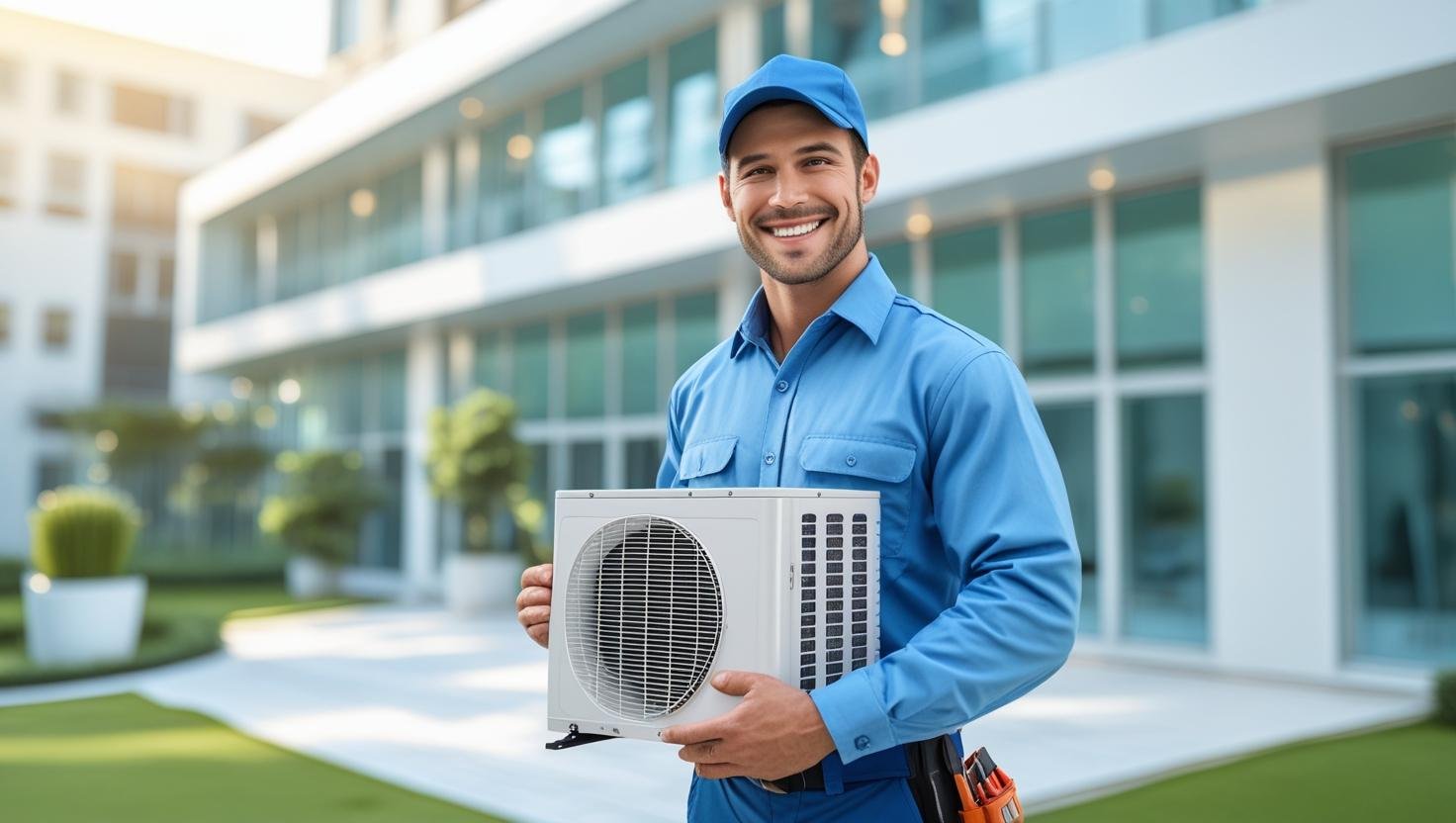Understanding the Different Types of Air Conditioners
When choosing an air conditioning system for your home or office, it is essential to understand the various types that are available. The two most commonly utilized systems are central air conditioners and window air conditioning units, each designed to meet specific needs and preferences.
Central air conditioning systems are comprehensive solutions that cool entire homes by distributing chilled air through a network of ducts. These systems consist of an outdoor unit, typically housing the compressor and condenser, while the indoor unit contains the evaporator coil. One of the significant advantages of central air conditioners is their ability to maintain a consistent temperature throughout larger spaces, making them ideal for homes with multiple rooms. Additionally, they tend to be more energy-efficient, especially in scenarios where the system is designed to cool a large volume of air. However, their installation can be expensive and complex, and they require regular maintenance to sustain optimal performance.
On the other hand, window air conditioning units are compact systems designed to cool a single room or area. They are installed in a window or through a wall and contain all necessary components within a single appliance. The primary benefit of window units is their affordability and ease of installation. They are also energy-efficient for smaller spaces, allowing users to target specific areas rather than cooling the entire home. Nonetheless, window units can be less effective in extremely hot climates and may produce more noise when operating. Moreover, they may obstruct views when installed in windows.
When selecting the right air conditioning system, considerations should include the size of the space to be cooled, the cooling capacity required, the flexibility of installation, and energy efficiency ratings. By understanding the different types of air conditioners and their respective advantages and disadvantages, consumers can make informed decisions tailored to their unique needs and preferences.
Preparing for Installation
Before embarking on the installation of your air conditioning unit, proper preparation is vital to ensure a successful setup. Start by assessing the location for installation, whether it is a central air conditioning system or a window unit. For window units, ensure that the chosen window frame can support the weight of the unit and has a proper seal to prevent air leaks. For central air systems, identify a suitable place for the outdoor condensing unit, taking into account space for air circulation and proximity to the indoor unit.
It is also important to check local building codes and regulations regarding air conditioning installation. Compliance with these regulations not only helps in avoiding legal issues, but it also ensures that the unit operates safely and efficiently. Consult your local municipality or a professional contractor to confirm the requirements specific to your area.
Safe electrical access is another crucial aspect to consider prior to installation. Verify that your electrical system is compatible with the air conditioning unit’s requirements, including voltage and amperage. If necessary, upgrade your electrical system or consult a licensed electrician to ensure proper installation and operation.
Gathering the right tools and equipment is essential for a smooth installation process. Common tools needed may include a screwdriver, level, measuring tape, and safety gear such as gloves and goggles. Additionally, having a helper can make the process much easier, especially when lifting heavy units or ensuring accurate placements.
Finally, keeping safety precautions in mind is imperative to protect yourself and your property. Ensure that you follow all manufacturer instructions, utilize safety equipment, and turn off electrical circuits before beginning the installation. By taking these preparatory steps, you will create a solid foundation for a successful air conditioning installation.
Step-by-Step Installation Process
Installing an air conditioning system, whether a central unit or a window unit, can be a straightforward process if approached systematically. Below, we outline the essential steps for both types of installations.
Installing a Central Air Conditioning System: Begin by planning the installation. This includes selecting the appropriate size unit based on your home’s square footage and insulation quality. After acquiring the unit, follow these steps:
- Mounting the Air Handler: Start by placing the air handler inside the home. Ensure it fits securely into the designated area, usually in the basement or attic, and is leveled properly.
- Connecting Refrigerant Lines: Carefully connect the supply and return refrigerant lines from the outdoor condenser to the indoor air handler. Ensure that all connections are tight to prevent leaks.
- Electrical Wiring: Follow the manufacturer’s manual to connect the electrical power supply. This often involves wiring the thermostat and ensuring all components are properly grounded.
Installing a Window Air Conditioner: This type of air conditioning unit requires less specialized knowledge. To install a window unit, carry out the following:
- Preparing the Window: Start by cleaning the window frame. Measure to ensure your unit fits snugly, and consider using a support bracket for units over a certain weight.
- Securing the Unit: Carefully lift the window unit into the window frame and secure it using screws provided. Follow this with weather stripping around the edges to minimize air leaks.
- Plugging in and Testing: Once secured, plug in the unit and test its functionality by turning it on. Adjust the settings to the desired cooling level and listen for any unusual noises.
Throughout the installation process, it is vital to take safety precautions. Wear appropriate personal protective equipment and ensure that electrical connections comply with local codes. Common mistakes include improper leveling of the unit and insufficient sealing, which can reduce efficiency and increase energy bills. By following these detailed steps and tips, you can ensure a successful installation of your air conditioning units.
Post-Installation Maintenance and Tips
Once the installation of your air conditioning system is complete, it is crucial to engage in regular maintenance to enhance its longevity, efficiency, and overall performance. One of the first steps in air conditioner maintenance is to clean or replace the filters. Clogged filters can restrict airflow, leading to decreased efficiency and increased energy consumption. Depending on usage and environmental factors, it is generally recommended to check the filters every month and clean or replace them every one to three months.
Another vital aspect of maintaining your air conditioning system is to routinely check refrigerant levels. Insufficient refrigerant can lead to inadequate cooling and may indicate a leak in the system, which should be addressed immediately by a professional technician. Regularly inspecting refrigerant levels not only preserves the cooling capacity but also helps in maintaining the efficiency of the unit.
Scheduling regular professional inspections is also highly advisable. An experienced technician can identify potential issues before they escalate into significant problems, ensuring that your system operates smoothly. During these inspections, the technician will assess various components, including the compressor, coils, and electrical connections, to ensure everything is functioning optimally.
Furthermore, optimizing your air conditioner’s performance can significantly improve indoor air quality. Keeping the outdoor unit free from debris, such as leaves and dirt, enhances its efficiency. Additionally, using timers and programmable thermostats can help regulate temperature effectively, reducing energy consumption and promoting a comfortable environment.
Proactive care not only ensures the effective operation of your air conditioning system but also contributes to a healthier living space by maintaining better air quality. Implementing these basic maintenance tips will certainly foster the optimal performance of both central and window air conditioners.
Share this content:

